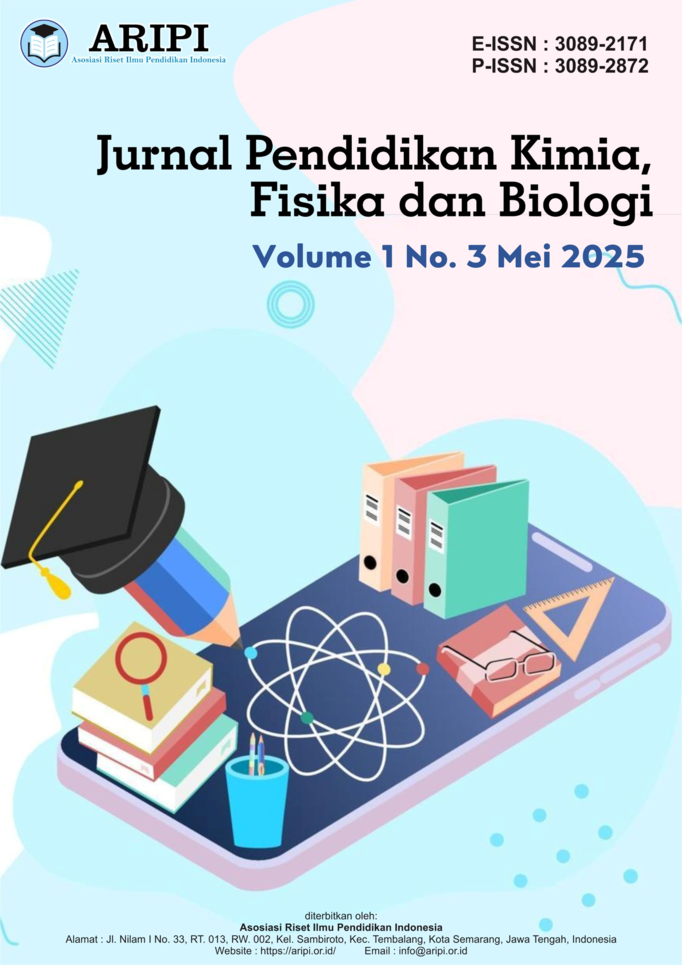Pemanfaatan Hewan Vertebrata sebagai Bahan Obat - obatan Tradisional di Kampung Kangae Desa Mekeng Detung Kecamatan Kangae
DOI:
https://doi.org/10.61132/jupenkifb.v1i3.229Keywords:
Ethnomedicine, Ethnozootherapy, Vertebrata, Kangae VillageAbstract
Indonesia is also known to have many cultural diversities, one of which is the culture of traditional medicine that has been passed down from generation to generation from ancestors. The use of animals as traditional medicine is still carried out by the people of Kangae Village. The purpose of this study is to find out how the knowledge of vertebrate animals, especially reptiles and mammals, is used as traditional medicine in Kangae Village and how the use of vertebrate animals, especially reptiles and mammals, as medicine in Kangae Village. This study uses a qualitative method. This study was conducted in Kangae Village, Mekeng Detung Village, Kangae District. Data collection techniques were carried out by observation, interviews, and documentation. The results of this study indicate that the people of Kangae Village use vertebrate animals as medicine, namely there are 5 types of animals that are used as medicine. Among the 5 types of animals, there are 3 types of reptiles and 2 types of mammals. These animals are Geckos (Teke), Monitor Lizards (Oti), Snakes (Ular), Dogs (Ahu), and Bats (Ni’i). The knowledge of the Kangae Village community regarding the use of animals as medicine is obtained in two ways, namely, traditions passed down from ancestors and finding out for themselves (through relatives, neighbors and friends) and the method of processing medicinal animals consists of roasting, chopping, and making it into a dish according to the taste of the person consuming it.
References
Afriyansyah, B., Hidayati, N. A., & Aprizan, D. H. (2016). Pemanfaatan hewan sebagai obat tradisional oleh Etnik Lom di Bangka. Jurnal Penelitian Sains, 18(2), 66–74.
Alipin, K. (2022). Edukasi pengetahuan tentang pemanfaatan tumbuhan obat pada masyarakat di berbagai lokasi kediaman mahasiswa KKN Integratif UNPAD. KKN Integratif UNPAD, 11(4).
Apriyanto, B. D. (2020). Pemanfaatan hewan sebagai obat pada masyarakat Kecamatan Juwana Kabupaten Pati (Skripsi tidak diterbitkan). Universitas [Nama Universitas jika diketahui].
Dipa, F., Syafutra, R., Dalimunthe, N. P., & Priyansah, S. (2023). Pemanfaatan satwa liar sebagai obat tradisional di Desa Parit Padang, Kabupaten Bangka. CONSERVA, 1(1), 14–22.
Hamdani, R., Tjong, D. H., & Herwina, H. (2012). Potensi herpetofauna dalam pengobatan tradisional di Sumatera Barat. Jurnal Biologi Universitas Andalas, 2(2), 116–117.
Latief, A. (2012). Obat tradisional. Jakarta: EGC Penerbit Buku Kedokteran.
Nisfiyanti, Y. (2012). Sistem pengobatan tradisional (Studi kasus di Desa Juntinyuat, Kecamatan Juntinyuat, Kabupaten Indramayu). Patanjala, 4(1), 129–140.
Sahiu, R. (2017). Jenis satwa liar dan pemanfaatnya di Pasar Beriman, Kota Tomohon, Sulawesi Utara. COCOS, 1(3). http://ejournal.unsrat.ac.id
Sumirat, W. L. (2017). Perilaku masyarakat pada pengobatan tradisional Sangkal Putung H. Atmo Saidi di Desa Sroyo, Kecamatan Jaten, Kabupaten Karanganyar (Studi kasus pada masyarakat pemakai dan bukan pemakai pengobatan tradisional Sangkal Putung). SOSIALITAS: Jurnal Ilmiah Pendidikan Sosial Antropologi, 5(2). http://jurnal.fkip.uns.ac.id
Wasito, H. (2011). Obat tradisional kekayaan Indonesia. Yogyakarta: Graha Ilmu.
Downloads
Published
How to Cite
Issue
Section
License
Copyright (c) 2025 Jurnal Pendidikan Kimia, Fisika dan Biologi

This work is licensed under a Creative Commons Attribution-ShareAlike 4.0 International License.





